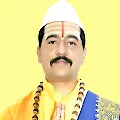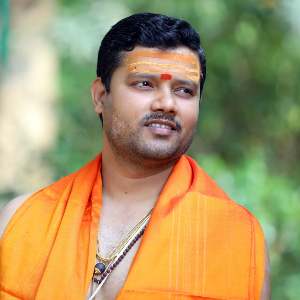

Festivals in Trimbakeshwar Temple: Mahashivaratri, Palkhi Sohala and Kumbh Mela

India is referred to as the “Land of festival and events.” There are many festivals celebrated in India than anywhere else in the world. Each festival is celebrated for different reasons. Festivals are an expressive way to celebrate culture, glorious heritage, and traditions. They play an important role in our social lives and connect us with our families and friends. Festivals likes Janmashtami, Hari Har Bhet, Full Moon, Ram Navmi, Kumbh Mela, Mahashivaratri, and Palkhi Sohala. Each city is famous because of the different festivals celebrated in that city. Nashik Trimbakeshwar Temple is famous because of Kumbh Mela and Mahashivratri. One more important event of Trimbakeshwar is Palkhi Sohla. Because of these festivals and events, devotees are coming to Trimbakeshwar from all over the globe.
Trimbakeshwar Shiva Temple is considered the most sacred town in India. There are many reasons for this belief. The Godavari originates from the Brahmagiri hills in this town and the birthplace of Lord Ganesha, known as a Tri-Sandhya Gayatri. It was constructed by the third Peshwa Balaji Bajirao (1740- 1760) on the site of an old temple. The whole temple is built with black stones and is known for its architecture.
It is one of the Swayambhu Jyotirlinga, and a unique feature of this Jyotirlinga is, it has three faces Lord Brahma, Lord Vishnu, and Lord Rudra. It is 100 years old temple.
As we all know, Trimbakeshwar Temple is famous for performing rituals like Narayan Nagbali, Kaal Sarp Dosh Puja, Tripindi Shardh, Rudra Abhishek, Kumbh Vivah, and Mahamrityunjay Jaap. It is believed that performing rituals at Trimbakeshwar will be more beneficial than performing at any other place. All pujas are performed by Purohit Sangh Guruji. They are local Guruji of Trimbakeshwar town having legal Birthright to perform pujas in Trimbakeshwar Temple.
Festivals Celebrated in Trimbakeshwar Temple
Mahashivratri, Palkhi Sohala, and Kumbh Mela are the main festivals of the Trimbakeshwar Temple.
1. Trimbakeshwar Temple Mahashivaratri Festival:
Hindu’s most worshipped deity is Lord Shiva. So, it is natural that there are so many temples dedicated to Lord Shiva all across India. One of the most prominent Lord Shiva's temples is the Trimbakeshwar temple. The biggest festival of this temple is Mahashivratri. On Mahashivaratri day, a large fair is held here in February-March, which draws hundreds of devotees from all over India. This festival is celebrated every year to worship Lord Shiva. It is celebrated as the anniversary of Lord Shiva and Goddess Parvati.
Mahashivaratri is also celebrated as a day when Shiva saved the world from the pot of poison. The celebration includes “ Jaagaran” all-night vigil and prayers. Offerings of fruits, sweets, colourful flowers, and milk to Lord Shiva. Some people perform all-day fast with Vedic worship Lord Shiva. In Trimbakeshwar temple, “Om Namah Shivay,” the sacred mantra of Shiva is chanting throughout of day on the occasion of Mahashivaratri
2. Trimbakeshwar Temple Palkhi Sohala:
Another most important event of the Trimbakeshwar Temple is Palkhi Sohala.
Three in One!!! Trimbakeshwar temple is dedicated to Lord Shiva. It is Swayambhu jyotirlinga houses a unique linga laying deep inside a pit that symbolizes three faces of Lord Brahma, Lord Vishnu, and Lord Mahesha.
Every Monday, auspicious to Lord Shiva, Palkhi Sohala is celebrated in the Trimbakeshwear Temple. Trimbakeshwar Purohit Sangh organizes Palkhi rituals. It is decorated with different colorful flowers. The lingas are covered by a golden crown, which comes from the age of the Pandavas. This Crown is well decorated by many rich precious gems, consisting of rubies, emeralds, and diamonds. This Crown is placed on the linga. Lord Trimbakeshwara Idol with the Crown is established in the Beautiful Palkhi (Palanquin) and available for Darshana of Devotees. Devotees follow the Palkhi with Joy, and a procession is made in the Honour of Lord Trimbakeshwara.
Each Monday around 4 pm, the Palkhi is made from the Main Temple of Trimbakeshwara and starts procession up to Kushavarta Tirtha. During Palkhi, rangolis are made by the Devotees in the Path along with the Temple of Trimbakeshwara to Kushavarata. Dhol, Nagara, Shehnai music is played during the procession. As the Kushavarta Kund has religious importance, the main puja of the Shiv Linga will perform on the kushavarta Kund. They perform Puja, Abhishek to the Shiv Linga with Kushvarta Kund water. Guruji applies sandalwood paste to Lord Shivas Lingas, and puja is over with Maha-aarti. Palkhi tradition has been going on since the times of Nansaheb Peshwa. Many devotees have come to take a Darshan of Palkhi. They offer flowers to the deity to please them and get their blessings.
3. Trimbakeshwar Temple Kumbh Mela:
During the churning of the ocean, a drop of amruth (nectar) is said to have fallen in Trimbabkeshwar. Because of that, once in 12 years, Kumbhamela is celebrated here when lakhs and lakhs of devotees throng to have a dip in the holy Triveni Sangam of Godavari, Varuna, and Aruna rivers. This religious festival is celebrated four times over 12 years. The site of the Kumbh Mela rotating between four pilgrimage places on four sacred rivers—at Haridwar on the Ganges River, at Ujjain on the Shipra, at Nashik on the Godavari Prayag.
Kumbh Mela of Nashik is also known as Trimbak Kumbh Mela. The primary purpose of people coming to the Kumbh Mela is to take a scared bath. Devotees take a scared bath on the banks of the Godavari River, at the Trimbakeshwar Shiva Temple and the Ram Kund in Nashik.
Many devotees are coming from all over the world to attain Kumbh Mela at Trimbakeshwar.
Trimbakeshwar looks more beautiful in the monsoon season, with the backdrop of lush green scenery, and the Sahayadri valley and mountain remain unpolluted even today
The Trimbakeshwar Temple remains open from 5.30 am to 9 pm.
It is also believed that people who visit this holy place attain moksha.
श्री राम नवमी 02 Jun '21 Wednesday



Copyrights 2020-21. Privacy Policy All Rights Reserved
Designed and Developed By | AIGS Pvt Ltd

